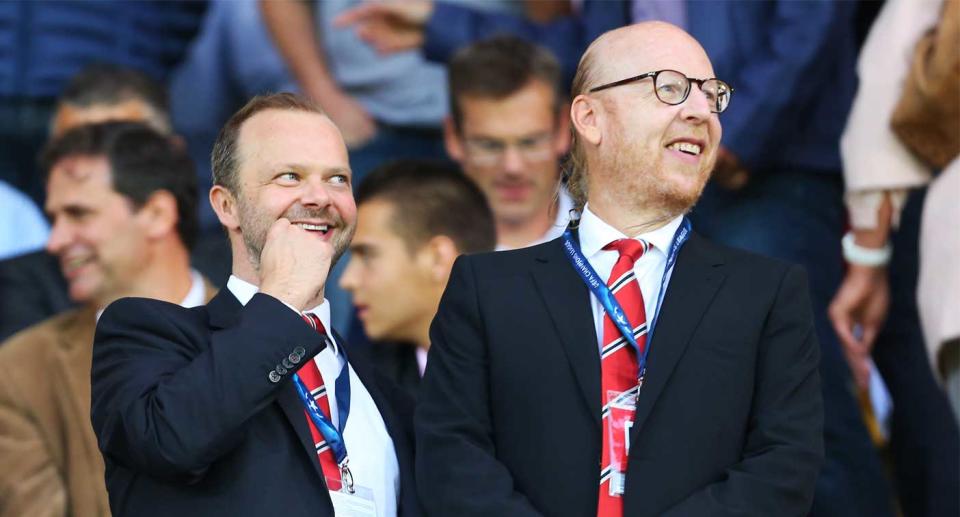Manchester United is both the world's most indebted and profitable club, UEFA report finds

Manchester United posted an operating profit of $152 million in the fiscal year 2015, making it the most profitable club in Europe. And knowing what we do about the disparity in soccer’s finances between Europe and every other continent, it’s extremely safe to declare the Red Devils the most profitable club in the world.
Yet United is owned by the American Glazer family, who leveraged it for almost a billion dollars just to complete their purchase in 2005 – which is to say, the Glazers took out loans against the club itself just to buy it, meaning those debts have to be paid off by a team that never got to spend the money. Presently, that debt has been paid down to about $563 million, which – again, in all probability – also leads the global game.
Those were some of the findings of a fascinating new report called “The European Club Footballing Landscape” released by UEFA, the sport’s European governing body, on Thursday.
Paris Saint-Germain was the second most profitable at $127 million, followed by Real Madrid ($95 million), Liverpool ($91 million) and Arsenal ($85 million). Valencia, CSKA Moscow, AC Milan, Udinese and Olympique Marseille posted the largest operating losses, ranging from $54 million to $28 million.
Benfica, Inter Milan, Valencia and Queens Park Rangers followed United in the debt category, running from $357 million down to $296 million.
Here are some other interesting tidbits from the report:
Romania and the top-two divisions of the Turkish league are the worst place to be a head coach, as 94 percent of clubs replaced a head coach during the 2014-15 season. Northern Ireland and Finland were the best with a rate of just 8 percent. In England it was 40 percent, in Spain 50 percent, in Germany 53 percent and in Italy 65 percent. Major League Soccer and South Korea are the friendliest outside of Europe, with 20 and 17 percent, respectively. Costa Rica is the worst in the world at 100 percent.
As of August 2016, England had some of the oldest head coaches in soccer with an average age of 52. Northern Ireland had the youngest at 40.6. At 44.4, MLS was tied with Venezuela for the youngest outside of Europe.
The English, Spanish and Italian leagues had some of the oldest average ages for players in January 2016, all at 26.9, trailing only Russia and Turkey. The Dutch and the Croatian leagues were the youngest at 23.8. MLS sat in the middle of the pack at 26.3.
The Premier League had the highest rate of foreign players in the world at 69.2 percent in January 2016. Remarkably, the second-tier North American Soccer League came second globally at 59.6 percent.
82 percent of the world’s transfer market value is concentrated in Europe, of which the Premier League leads the way with $4.6 billion, followed by La Liga, Serie A and the Bundesliga. MLS clocked in at a modest $318 million.
Borussia Dortmund had the highest average attendance in Europe in 2015-16 with 81,178. Barcelona had the highest total attendance – thanks to a longer league season – with 1,514,756.
Nineteen percent of European clubs are foreign-owned. Forty percent remain domestically-owned with 37 percent of clubs have no controlling party. The rest is unknown.
Total European club revenues are now six times higher than they were in 1996. Real Madrid, Barcelona, Manchester United, Paris Saint-Germain and Bayern Munich are the biggest earners in total revenue (not profit), in that order.
Real Madrid and Arsenal are tied for the highest gate receipts in Europe for the 2015 fiscal year at $139 million.
Unsurprisingly, Premier League teams combined to earn the most sponsorship, at almost $1.4 billion.
Also unsurprisingly, the Premier League’s total wage bill was more than double that of the next-highest leagues: Serie A, the Bundesliga and La Liga.
A deeper look inside this study revealed a disconcerting picture of how perilous finances in soccer can be. For instance, 75 percent of total revenue in the Portuguese league is driven by transfer proceeds. In Croatia and Serbia, it’s 85 percent and 82 percent, respectively. Even in Italy’s historic Serie A, it’s 36 percent. This suggests an enormous reliance on an unreliable transfer market, and any kind of slump in purchasing from the clubs that spend the most could have a trickle-down effect on the smaller leagues that could lay waste to scores of clubs.
Meanwhile, some 63 percent of all revenue in European soccer goes straight back to player payroll. Of the 20 highest-paying leagues, only three — Germany, Norway and Sweden — sit below 60 percent. And while net debt is down across all of Europe from 65 percent of of revenue in 2009 to 40 percent in 2015, plenty of clubs are still structurally posting losses.
European club soccer, in other words, has lost some weight and started jogging, but financially, it still isn’t exactly healthy.
Leander Schaerlaeckens is a soccer columnist for Yahoo Sports. Follow him on Twitter @LeanderAlphabet.



